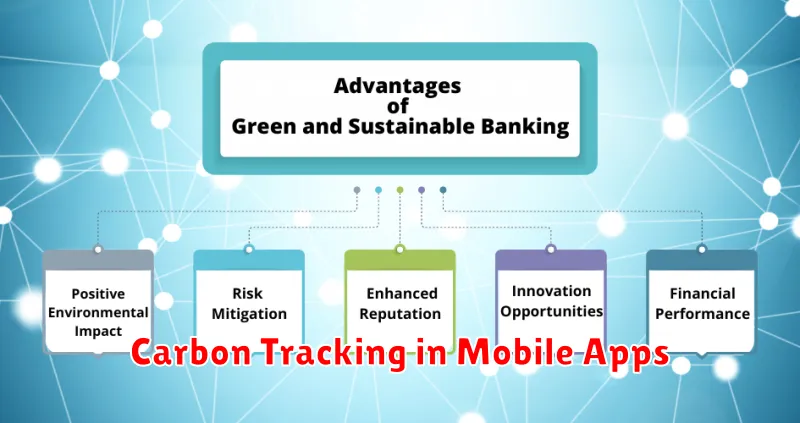In today’s rapidly evolving financial landscape, sustainable practices are no longer a niche consideration, but rather a critical imperative. The digital banking sector, with its vast reach and growing influence, has a unique opportunity and responsibility to lead the charge toward a more environmentally and socially responsible future. This article will explore the various ways in which digital banking institutions are embracing sustainability, from reducing their carbon footprint through green IT initiatives to promoting financial inclusion and ethical lending practices. We will delve into the key drivers behind this shift, including increasing regulatory pressure, growing consumer demand, and the long-term economic benefits of adopting sustainable practices.
Exploring sustainable practices in digital banking is essential for fostering a more resilient and equitable financial system. This article will examine specific examples of how digital banks are implementing sustainable strategies, such as utilizing renewable energy sources, minimizing paper consumption, and investing in green technologies. Furthermore, we will analyze the impact of these sustainable practices on various stakeholders, including customers, investors, and the wider community. By understanding the challenges and opportunities presented by this evolving landscape, we can work towards a future where digital banking serves as a powerful force for positive change.
What Is Sustainable Banking?
Sustainable banking refers to the integration of environmental, social, and governance (ESG) factors into banking operations and decision-making.
It goes beyond simply complying with regulations and embraces a proactive approach to managing risks and opportunities related to sustainability. This involves considering the long-term impact of financial decisions on the environment and society.
In essence, sustainable banking aims to create a positive impact, contributing to a more sustainable future while ensuring long-term financial stability.
Eco-Friendly Operations and Cloud Systems
Digital banking presents a unique opportunity to reduce the environmental footprint associated with traditional banking practices. A key component of this shift involves adopting eco-friendly operational strategies and leveraging the potential of cloud systems.
Cloud computing allows for significant reductions in energy consumption compared to maintaining physical data centers. The consolidated infrastructure and optimized resource utilization of cloud providers contribute to lower carbon emissions. Additionally, the scalability of cloud systems enables banks to adapt their IT resources based on demand, further minimizing wasted energy.
Furthermore, transitioning to paperless operations through digital document management and online transactions substantially decreases paper consumption and associated environmental impacts. This move towards digitalization streamlines processes and promotes a more sustainable approach to banking operations.
Paperless Banking Features
Paperless banking utilizes digital platforms to minimize paper consumption. This eco-friendly approach offers numerous features designed for a seamless and sustainable banking experience. Customers can access services like e-statements, online bill pay, and mobile check deposits, eliminating the need for physical documents.
These features not only benefit the environment but also offer increased convenience and efficiency for customers. Transactions can be performed anytime, anywhere, with instant access to account information and transaction history. Furthermore, paperless banking reduces the risk of identity theft and fraud associated with physical mail.
Green Investment and Loan Products
Digital banking platforms are increasingly incorporating sustainable finance options. This includes offering customers access to green investment products, such as sustainable bonds or funds focused on renewable energy and other environmentally friendly projects.
Green loans are also becoming more prevalent. These loans offer favorable terms to borrowers investing in environmentally responsible projects like energy-efficient home improvements or electric vehicles. This encourages customers to make eco-conscious choices while providing them with financial incentives.
Carbon Tracking in Mobile Apps

Carbon tracking within mobile banking apps is an emerging feature designed to raise user awareness of their financial activities’ environmental impact. By analyzing transaction data, these apps can estimate the carbon footprint associated with purchases.
This innovative approach leverages data analysis to connect spending habits with carbon emissions. For example, purchasing gasoline or an airplane ticket would have a higher estimated carbon footprint than buying groceries locally. The app then presents this information to the user, offering insights into their personal impact.
While still a developing technology, carbon tracking in mobile banking apps holds significant potential for promoting sustainable practices among consumers by providing personalized feedback and encouraging environmentally conscious spending decisions.
Digital Bank Partnerships with ESG Firms
Digital banks are increasingly partnering with Environmental, Social, and Governance (ESG) firms to enhance their sustainability practices. These partnerships offer several key advantages.
ESG firms provide specialized expertise in areas like carbon accounting, social impact assessment, and ethical governance frameworks. This helps digital banks develop and implement robust sustainability strategies, going beyond basic regulatory compliance.
Collaborations also enhance credibility and transparency. Independent verification by reputable ESG firms strengthens stakeholder trust and demonstrates a genuine commitment to sustainability.
Furthermore, these partnerships can unlock innovation. By working with ESG specialists, digital banks can explore new sustainable financial products and services, catering to the growing demand for ethical and responsible banking.
Transparency in Sustainability Reports
Transparency is a cornerstone of credible sustainability reporting. Clearly disclosing environmental, social, and governance (ESG) performance data builds trust with stakeholders. This includes providing detailed information about the methodologies used for data collection and analysis.
Comprehensive reporting should cover all relevant aspects of a digital bank’s operations, including its carbon footprint, data privacy practices, and ethical considerations surrounding artificial intelligence and automation. Avoiding vague language and providing quantifiable metrics wherever possible enhances the report’s value.
Independent third-party assurance of sustainability reports adds another layer of credibility. External verification helps ensure data accuracy and reporting integrity, reinforcing stakeholder confidence in the reported information.
Educating Users on Green Finance
Green finance plays a crucial role in achieving environmental sustainability. Digital banking platforms are uniquely positioned to educate users on green finance products and their benefits.
This education can take various forms, including:
- In-app notifications highlighting green investment options.
- Blog posts and articles explaining green finance concepts.
- Interactive tools that calculate the environmental impact of different financial choices.
By providing clear and accessible information, digital banks can empower users to make informed decisions that align with their values and contribute to a more sustainable future.
Case Studies from Eco-Focused Neobanks
Several neobanks are pioneering eco-conscious practices. One example offers impactful investing options, allowing customers to directly support environmental projects with their deposits. Their transparency reports detail the positive environmental impact generated.
Another neobank utilizes a carbon offsetting program. For every transaction made, they contribute to initiatives that reduce greenhouse gas emissions. This model provides a tangible way for customers to participate in climate action through their everyday spending.
A third example focuses on sustainable spending. This neobank provides tools and insights that help customers understand the environmental footprint of their purchases. They encourage conscious consumption by offering personalized recommendations for eco-friendly alternatives.
The Future of Green Digital Finance

Green digital finance stands poised to revolutionize how we interact with financial systems, integrating sustainability into the core of digital banking. This emerging field seeks to leverage technology to drive environmentally friendly investments and promote sustainable practices.
Key trends shaping this future include the rise of green bonds accessible via digital platforms, increased use of blockchain for transparent and secure tracking of green investments, and the development of sophisticated AI-powered tools for assessing environmental risks and opportunities.
These advancements promise greater accessibility to green finance solutions for individuals and businesses alike, driving a shift towards a more sustainable financial ecosystem.

